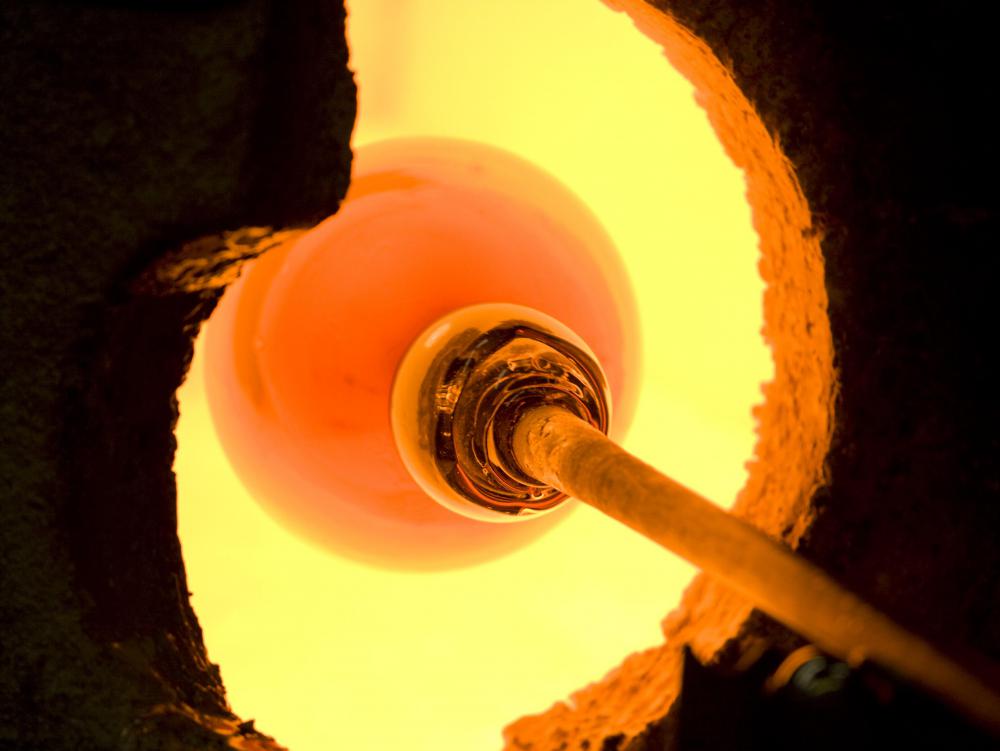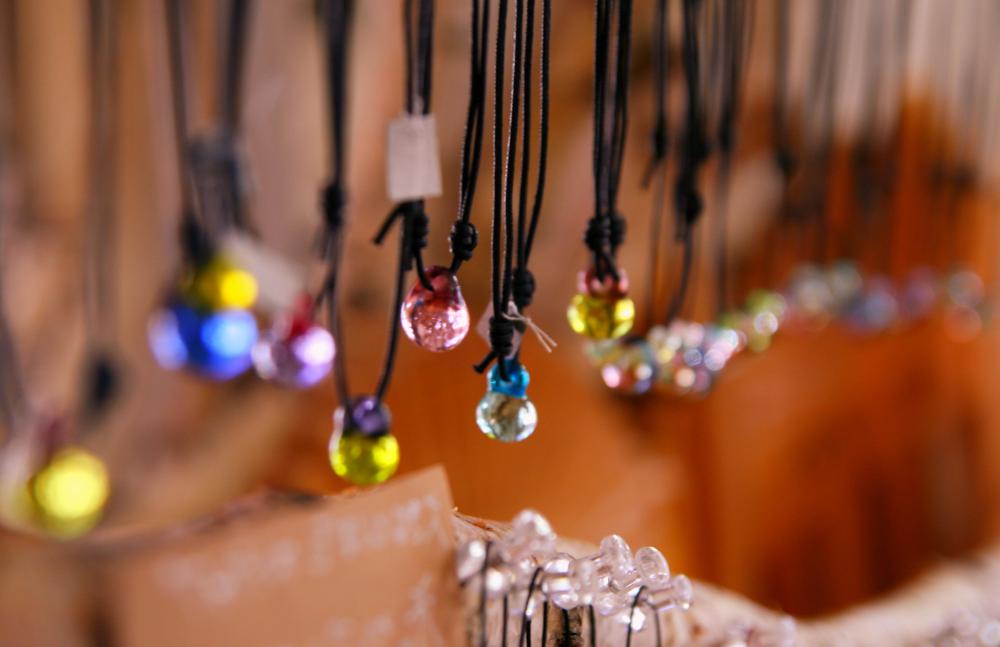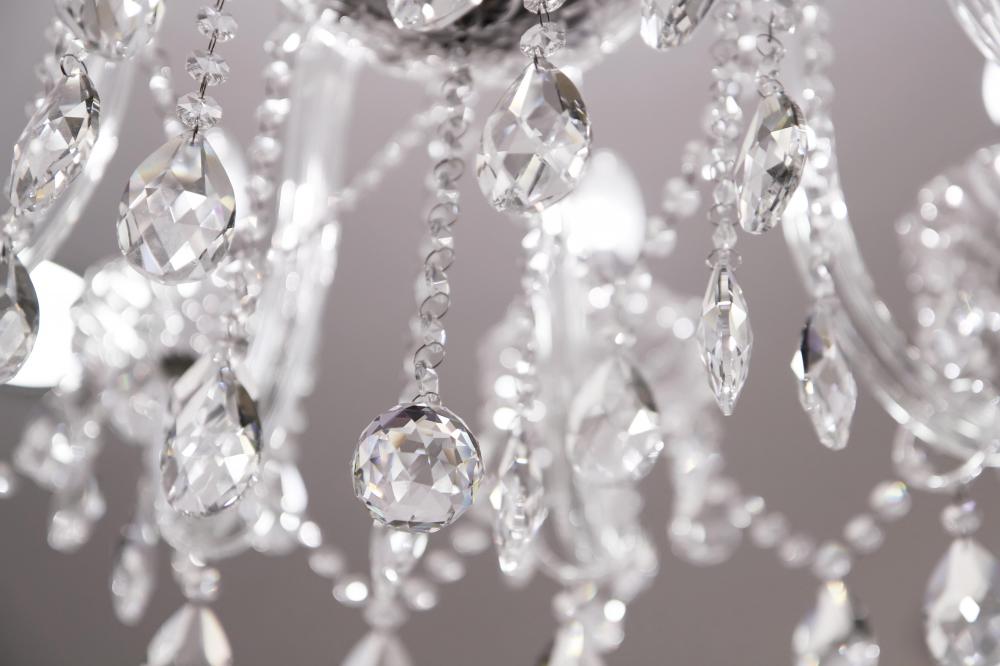At HomeQuestionsAnswered, we're committed to delivering accurate, trustworthy information. Our expert-authored content is rigorously fact-checked and sourced from credible authorities. Discover how we uphold the highest standards in providing you with reliable knowledge.
What is the Difference Between Glass Beads and Crystal Beads?
The manufacture of glass and crystal beads is a magical process. Glass in its most basic form is molten sand that is combined with various additives and cooled with such celerity that crystal structures have no time to form. While in a solid state, silica sand is mixed with an alkali substance, like soda ash, to lower the melting point of the sand and therefore make it easier to work with. The soda ash causes the mixture to become water soluble, which is not the intended result. Lime, procured from limestone, is added to reverse this effect.
The substance is then melted down at temperatures of 2700 degrees F (1500 degrees C) or higher. In its liquid state, the mixture may be worked in one of several ways to produce decorative and functional objects. Glassblowing is an art in which the molten glass is worked with the use of inorganic aids to sculpt the liquid into the shape it will eventually take. Lamp work is a technique by which most glass beads are made. It is very time consuming, as it requires each bead to be formed individually, but also allows for a greater variety of styles and designs.

Besides the basic compounds, other substances are often added during the process. When lead or lead oxide is added to a basic glass mixture, the refractive index of the finished product increases. The resultant object is a piece of glass that is heavier than standard glass and much shinier. It is in this way that crystal glass is made.
The process for making crystal is an ancient one, having been discovered as early as 1400 BC. The earliest surviving piece of crystal glass is a fragment of blue crystal found in Nippur, Sumeria, from this period. The process of creating crystal glass was not refined until the year 1673 when George Ravenscroft, a British artisan, was granted a patent on the process. Once the process was perfected, it began to be used in the manufacture of fine crystal items, including crystal beads.

Crystal beads, like their plain glass counterparts, come in a variety of shapes, sizes, colors and even compositions. While there are no international standards governing the amount of lead added to glass, most of the world, with the exception of the United States, follows the official British standard. These standards state that "fine crystals" are composed of 6 to 10 percent lead oxide, "lead crystals" should be composed of 10 to 20 percent lead oxide and "full lead crystals" are composed of 24 percent or more lead oxide. In addition to the addition of lead, special cutting and polishing processes are used to give crystal glass even more sparkle.

While the composition of glass and crystal beads is relatively similar, the finished result is quite different. Glass beads tend to be lightweight and inexpensive, while crystal beads are often heavier, more delicate, and more expensive. Both are perfectly suited to jewelry making, but crystal often requires the use of sturdier accessory elements, such as clasps, clamps and beads. Crystal beads as well as glass beads are breakable under certain circumstances, including damage by blunt force, drastic and rapid changes in temperature and occasionally simply deterioration.
AS FEATURED ON:
AS FEATURED ON:














Discussion Comments
Does all crystal have lead? I always thought lead is unsafe so why is crystal liked so much?
@croydon - Technically it should be called lead glass rather than crystal because scientifically a crystal is something else, like you say. But everyone calls lead glass crystal, because it sounds more refined, and that's not likely to change.
Even though around 6% lead is called "fine crystal" the more lead that is added the more brilliant and more valuable crystal becomes. Crystal with around 33% lead is considered the best. It's also easier to cut when it contains more lead, but more difficult to shape through glass blowing.
Is crystal containing more lead considered to be more valuable? Is it shinier, or more difficult to work with? I know it is kind of dumb, but I never realized crystal was just glass with lead added to it. I thought it was made out of something else altogether. That it was made from actual crystals, like gemstones are made out of rock crystals.
Beads made out of crystal are my favorite kind of jewelry. It's nice to know a little more about them.
I really love crystal beads but find most variety and value in the glass ones. But I suppose it depends on where you shop.
Post your comments